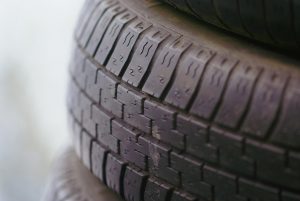How to take care of your car tires
 Taking care of your car tires is an important part of vehicle maintenance. Properly maintaining and inspecting your tires can help ensure a safe, reliable ride while also extending the life of your tires. Here are some tips to help you keep your car tires in top shape.
Taking care of your car tires is an important part of vehicle maintenance. Properly maintaining and inspecting your tires can help ensure a safe, reliable ride while also extending the life of your tires. Here are some tips to help you keep your car tires in top shape.
Check your tires’ air pressure at least once a month
Many people don’t realize how important it is to keep their tires properly inflated. Not only does this help to improve gas mileage, but it also helps to extend the life of the tires and improve handling. Unfortunately, many people only think to check their tire pressure when they get a flat. By that time, it’s often too late to prevent damage. The best way to avoid this is to check your tire pressure at least once a month, and to keep a close eye on the tread. If you notice any bald spots or uneven wear, it’s time to get new tires. With a little bit of care, you can keep your car running safely and efficiently for years to come.
Rotate your tires every 6,000 miles
Most carmakers recommend that you rotate your tires every 6,000 miles or so. This helps to ensure even wear and tear, which can extend the life of your tires. Many people don’t realize that the front and rear tires wear differently. The front tires tend to experience more wear and tear because they bear the brunt of the engine’s weight and are responsible for most of the turning. The rear tires, on the other hand, provide stability and traction. As a result, they often last longer than front tires. By rotating your tires, you can help to ensure that all four tires wear evenly, which can save you money in the long run. Plus, it’s a relatively easy task that you can do yourself with just a few tools. So next time you hit 6,000 miles, be sure to rotate your tires.
Replace your tires when they reach the tread wear indicator
Most people are familiar with the penny test for checking tire tread depth, but few know that there’s actually a built-in indicator on every tire that tells you when it’s time to replace them. It’s called the tread wear indicator, and it’s a small raised area in the tread grooves that becomes flush with the rest of the tire when the tread has worn down to the minimum level. Replacing your tires at this point is essential for maintaining safe driving conditions, as worn-out tires can significantly reduce traction on wet or icy roads. Additionally, tires with low tread depth are more likely to blow out or suffer other types of damage. So next time you’re checking your tires, be sure to look for the tread wear indicator. If it’s visible, it’s time for new tires.
Inspect your tires for damage or signs of wear and tear regularly
If you see any cracks, bulges, or bald spots, it’s time to replace your tire. And if your tread is worn down, you may not be able to stop as quickly in an emergency situation. It’s also important to check your tire pressure regularly and inflate them to the proper level. Underinflated tires can cause a blowout, and overinflated tires can make your car less stable on the road.
By taking some simple steps to maintain your tires, you can help keep yourself safe on the road. So make sure to add tire inspection to your regular car maintenance routine.
Regularly checking your car’s tires for air pressure, damage, and signs of wear and tear is an important part of taking care of your vehicle. Not only will this help keep you safe while driving, but it can also extend the life of your tires. Make sure to follow the guidelines we’ve provided so that you can get the most out of your car’s tires.
